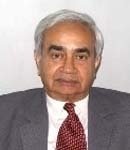Peace Audit
Ten Years of Ceasefire along the LoC: An Evaluation
30 Nov, 2013 · 4201
PR Chari provides an overview of the ceasefire
Some history would be of relevance here.
The Line of Control (LoC) was envisioned by the Simla Agreement entered on 2 July 1972; it replaced the ceasefire line negotiated by the Karachi Agreement of 1 January 1949 and demarcated thereafter on the ground. Significantly, the ceasefire line and the LoC in Jammu and Kashmir came into existence after the Indo-Pak hostilities of 1947-48 and 1971. India had pressed for this change in nomenclature, urging that the ceasefire line had been disarranged by the hostilities in 1971. In truth, India had wished to deny the UN Military Observers’ Group ant role in administering the new border because its working was found intrusive and irksome. Two more facts. The LoC was only demarcated wherever the ceasefire line had been disarranged, and a confidential agreement was reached by Indira Gandhi and Zulfiqar Ali Bhutto to convert the LoC into an international border between the two countries. This latter agreement was never implemented.
Fast forward to May 1998 and the reciprocal nuclear tests conducted by India and Pakistan. Great fears arose of nuclear conflict in South Asia, but an atomic peace was also emplaced under the rubric of nuclear deterrence. However, Pakistan’s irredentist effort to infiltrate its forces across the LoC in the Kargil sector led to a two-month long conflict over May-July 1999. Later, the Indo-Pak border confrontation crisis lasted from mid-December 2001 lasted till October 2002 following an attack on the Indian Parliament. The situation along the LOC rapidly deteriorated thereafter.
Firings across the LoC increased in intensity over 2003. Artillery duels became a daily feature. The local population living along the LoC was forced to abandon their fields and homes. Border communications became hazardous. The possibility of a local cross-LoC conflict escalating and assuming larger proportions was always there. However, steps were also taken to normalize relations by re-starting the Delhi-Lahore bus service, offers to resume sporting events, returning the two High Commissioners (withdrawn after the Kargil conflict) to their posts, and so on. Thereafter, Pakistan offered the maintenance of a permanent ceasefire along the LoC in November 2003; later it was extended beyond grid reference NJ 9842 to the Siachen sector. This ceasefire agreement held up until recently. India also fenced off the LoC to check cross-border infiltration, despite Pakistan’s protests that this would alter the temporary character of the LoC.
How and why was this decade-long ceasefire disrupted? Pakistan alleges that Indian forces attacked a Pakistani border post on 6 January 2013, killing one soldier. An Indian spokesman claimed this was in retaliation against Pakistani ceasefire violations. Then, on 8 January, India alleged that Pakistani forces crossed the LoC and killed two of its soldiers; one of them was beheaded leading to great outrage in India. Pakistan denied these allegations. On 15 January, a third skirmish led to the death of a Pakistani soldier. High level talks between military commanders of both sides were then held to de-escalate this situation. But these skirmishes have continued resulting in the death of some 12 Indian and 11 Pakistani military personnel till end October. A number of civilian casualties have also occurred. Prime Ministers Manmohan Singh and Nawaz Sharif had met in New York in September and agreed that their two Director Generals of Military Operations would meet to improve the atmospherics and stop these attacks. Sadly, they have yet to meet. But skirmishes and cross-border firings are continuing with a steady accretion to casualties.
Why did these ceasefire violations flare up in 2013 after being dormant for a decade? Earlier, before 2003, ceasefire violations occurred for different reasons like the shifting of boundary markers due to weather conditions (heavy snow, avalanches) and both sides seeking thereafter to improve their ground positions; over-enthusiasm by local officers to improve their career prospects; onset of the open season for infiltration in summer after melting of the snows in mountain passes ; and so on. The present skirmishes and ceasefire violations, it seems, are resulting from Pakistani efforts to help insurgents and terrorists sneak into Jammu and Kashmir, since militant activities here are exhibiting a steady decline. Ceasefire violations serve as diversionary tactics to keep the Indian army distracted while the militants slip across the border. But, these are tactical considerations.
What are Pakistan’s long-term strategic reasons for escalating these ceasefire violations? In my view, the Pakistan army is firmly opposed to normalizing India-Pakistan relations as this would adversely impact its centrality in the national polity. Hence, converting the LoC into a live border serves its larger institutional interests. Nawaz Sharif’s agenda to improve Indo-Pak relations is anathema to the Pakistan army. Until Islamabad is able to establish greater control over GHQ Rawalpindi, it is unlikely that these ceasefire violations will stop, since they are designed by the Pakistan Army to keep India-Pakistan relations in flux.
Question: will General Kayani’s retirement and the elevation of General Raheel Sharif as Army Chief bring about any change?


